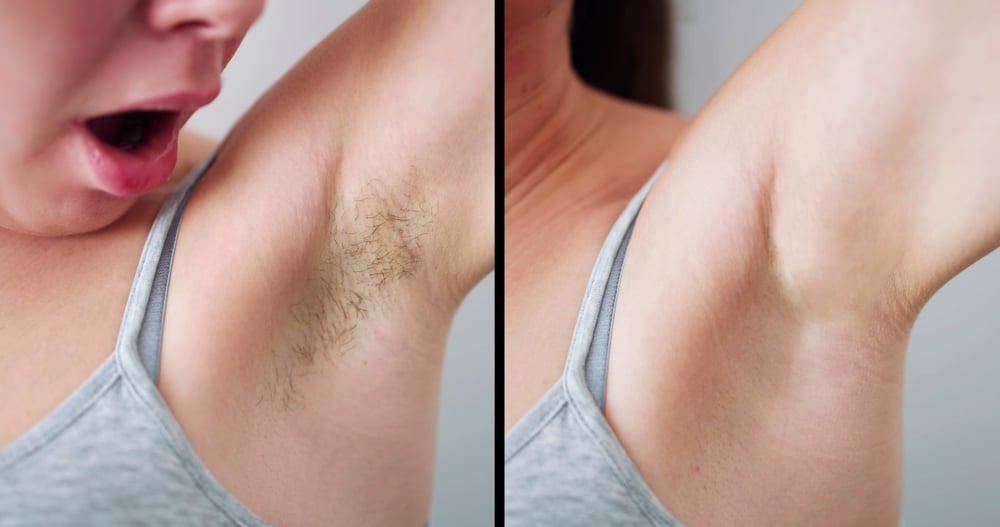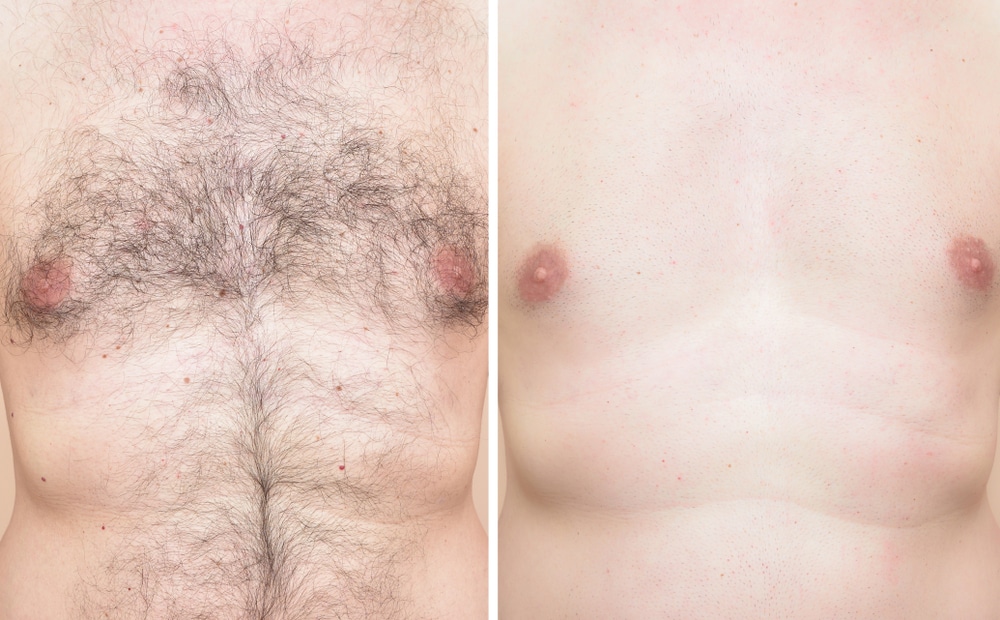We all strive for smooth, hair-free skin, but traditional hair removal methods like shaving, waxing, and plucking can be time-consuming and frustrating. That’s where laser hair removal comes in. It’s a popular procedure that promises long-lasting results. But is laser hair removal really permanent? In this comprehensive guide, we’ll dive deep into the topic to uncover the truth behind laser hair removal and its effectiveness in achieving permanent hair reduction.
Understanding Laser Hair Removal
Laser hair removal is a noninvasive procedure that uses concentrated beams of light to target and destroy hair follicles. The laser emits a specific wavelength of light that is absorbed by the pigment (melanin) in the hair follicles. This light energy is then converted into heat, which damages the follicles and inhibits future hair growth.
The procedure is performed by a trained dermatologist or laser technician. During the treatment, a handheld device is passed over the targeted area, delivering the laser pulses to the hair follicles. The process is usually well-tolerated, with minimal discomfort and minimal risk of complications when performed by a qualified professional.
How Laser Hair Removal Works
Laser hair removal works by targeting the hair follicles in their active growth phase, known as the anagen phase. At any given time, not all hair follicles are in the anagen phase, as they go through cycles of growth, rest, and shedding. This is why multiple treatment sessions are necessary to target the hair follicles during their active growth phase.
The laser energy is absorbed by the melanin in the hair follicles, which heats up and damages the follicles. Damaged follicles may not be able to produce new hairs or produce finer, lighter hairs. However, it’s important to note that complete destruction of all hair follicles is not always possible, and some hair regrowth may occur over time.
The Myth of Permanent Hair Removal
While laser hair removal is often marketed as a form of permanent hair removal, it is more accurate to describe it as long-term hair reduction. The FDA approves laser hair removal devices for “permanent hair reduction” rather than complete removal. This is because some hair follicles may be resistant to the laser treatment or may regenerate over time.
Research suggests that laser hair removal can achieve a significant reduction in hair growth, with studies reporting a range of 85% to 90% permanent hair reduction. The exact results vary depending on individual factors such as hair color, skin type, hormonal changes, and the practitioner’s expertise.
 Factors Affecting the Longevity of Laser Hair Removal
Factors Affecting the Longevity of Laser Hair Removal
Several factors can influence how long the results of laser hair removal last. It’s essential to consider these factors to manage your expectations and determine the need for maintenance treatments.
Hair and Skin Color
The ideal candidate for laser hair removal has lighter skin and darker hair. This contrast allows the laser to more effectively target the melanin in the hair follicles while minimizing the risk of damage to the surrounding skin. However, advancements in laser technology have made it possible to perform laser hair removal on a wider range of skin tones and hair colors.
Hormonal Changes
Hormonal changes can impact hair growth, even after laser hair removal. Conditions such as polycystic ovary syndrome (PCOS) or hormonal imbalances can cause new hair growth or stimulate dormant hair follicles. Additionally, pregnancy or changes in hormonal medication can also affect hair growth. In such cases, maintenance treatments or touch-up sessions may be necessary to maintain the desired results.
Hair Follicle Damage
The extent of hair follicle damage during laser hair removal plays a crucial role in the longevity of the results. If the follicle is completely destroyed, the hair will not regrow. However, if the follicle is only partially damaged, it may recover and produce new hair over time. Additionally, some hair follicles may be resistant to laser treatment, resulting in incomplete hair removal.
What to Expect During Laser Hair Removal
Before undergoing laser hair removal, it’s important to consult with a qualified dermatologist or laser technician to determine if you are a suitable candidate for the procedure. They will assess your skin type, hair color, medical history, and any potential risks or contraindications.
Treatment Sessions
Laser hair removal requires multiple treatment sessions to target hair follicles in different growth phases. The exact number of sessions varies depending on individual factors, such as the treatment area, hair density, and desired results. On average, most people require between four to six treatment sessions to achieve optimal results.
Pain and Discomfort
The level of pain or discomfort experienced during laser hair removal can vary from person to person. Most people describe the sensation as similar to a rubber band snapping against the skin or a mild stinging sensation. Topical numbing creams may be applied before the procedure to minimize any discomfort.
Aftercare and Recovery
After each laser hair removal session, it’s essential to follow proper aftercare instructions to promote healing and minimize the risk of complications. This may include avoiding sun exposure, applying soothing creams or ointments, and avoiding excessive heat or friction on the treated area. It’s crucial to follow the specific recommendations provided by your dermatologist or laser technician.
The Importance of Maintenance Treatments
To maintain the results of laser hair removal, periodic maintenance treatments may be necessary. While the initial treatment sessions target the majority of active hair follicles, some dormant or resistant follicles may eventually produce new hair. Maintenance treatments help to target these regrowth and ensure long-term hair reduction.
The frequency of maintenance treatments varies depending on individual factors and the desired level of hair reduction. Some people may require maintenance treatments once or twice a year, while others may require them less frequently. Your dermatologist or laser technician can provide personalized recommendations based on your unique needs.
The Cost of Laser Hair Removal
The cost of laser hair removal can vary depending on factors such as the treatment area, the number of sessions required, and the geographic location. On average, a single session can cost between $200 to $500, with full treatment cycles ranging from $1,000 to $3,000. While laser hair removal may require a significant upfront investment, many people find it cost-effective in the long run compared to the ongoing expenses of traditional hair removal methods.
Considering Other Hair Removal Options
While laser hair removal offers long-term hair reduction, it may not be the ideal solution for everyone. Some individuals may have contraindications or prefer alternative hair removal methods. It’s essential to explore all available options and consult with a dermatologist to determine the most suitable approach for your specific needs.
Alternative hair removal methods include:
- Waxing or sugaring: These methods involve removing hair from the root using warm wax or sugar paste.
- Electrolysis: This procedure uses a fine needle inserted into each hair follicle to deliver electrical currents and destroy the hair follicles individually.
- Threading: A technique that uses a twisted thread to trap and remove hair from the follicles.
- Shaving: The most common and affordable method involves cutting hair at the skin’s surface using a razor.
Each hair removal method has pros and cons, and the choice ultimately depends on individual preferences, skin sensitivity, and desired results.
Managing Expectations for Long-Term Hair Reduction
Laser hair removal offers a promising solution for long-term hair reduction. While it may not provide permanent hair removal, it can significantly reduce hair growth and provide smoother, hair-free skin for an extended period. The effectiveness of laser hair removal depends on various factors, including hair color, skin type, hormonal changes, and individual response to treatment.
To achieve the best results, it’s crucial to consult with a qualified dermatologist or laser technician, follow their recommendations for treatment sessions and aftercare, and consider maintenance treatments as needed. By managing expectations and understanding the limitations of laser hair removal, you can make an informed decision and enjoy the benefits of long-lasting hair reduction.



